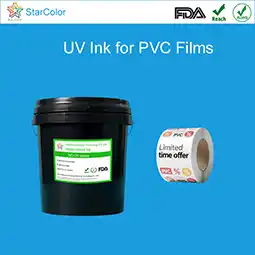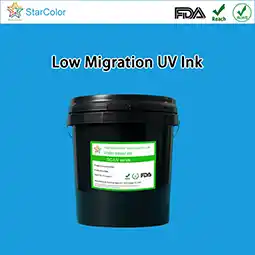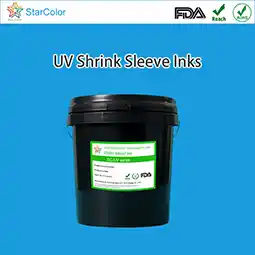Low migration ultraviolet (UV) inks have become essential in sensitive sectors such as food packaging and pharmaceutical labeling due to their rapid curing and low VOC properties. However, photoinitiator residue remains a critical challenge—unreacted initiators can migrate into food, violating standards such as GB 4806.14-2023 and EU 10/2011.
Data shows that conventional UV inks may contain photoinitiator residues as high as 0.5–1.2 mg/kg, far exceeding the legal limit (≤0.05 mg/kg). To address this issue, formulation optimization is the fundamental approach—focusing on photoinitiator selection, synergistic formulation, active diluent compatibility, and additive control to minimize residue while maintaining curing efficiency and compliance.
1. Core Principle: Understanding the Source of Photoinitiator Residue
Photoinitiator residue arises when initiators do not fully participate in crosslinking. This happens mainly due to two reasons: low photoreactivity or encapsulation of initiators within the resin network, and excessive initiator addition. Therefore, formulation optimization should aim to improve reactivity, reduce dosage, and enhance curing completion for minimal residue.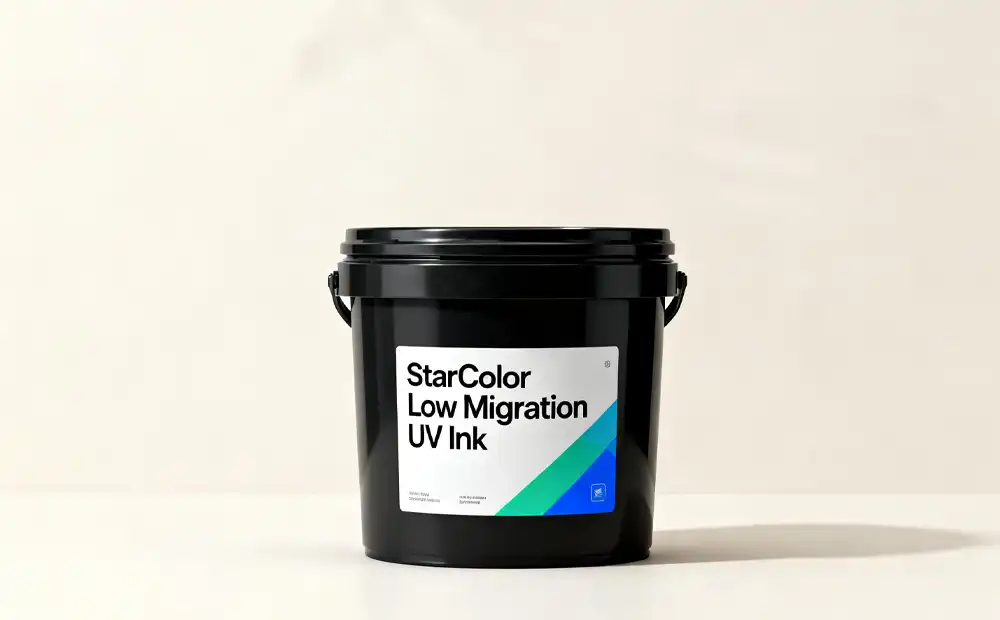
2. Formulation Optimization Step 1 – Raw Material Selection
Choosing the right photoinitiator is the foundation for reducing residue. High-quantum-yield, low-volatility, and polymerizable initiators should be prioritized while avoiding high-residue traditional types.
2.1. Use Reactive Photoinitiators
Traditional initiators such as BP and ITX are small molecules that migrate easily if unreacted. Reactive photoinitiators, such as acrylate-modified BP or maleimide-modified ITX, contain polymerizable double bonds that participate in crosslinking with the resin and active diluent, forming stable macromolecular networks. For example, acrylate-modified BP offers 30% higher reactivity and reduces residue from 0.8 mg/kg to 0.03 mg/kg while improving curing speed by 20%—ideal for high-speed food packaging printing.
2.2. Avoid High-Migration or Toxic Types
Photoinitiators restricted by EU REACH regulations (e.g., benzoin ethers) must be strictly prohibited. Benzophenone (BP) should be used only in minimal quantities (≤1%) if necessary. Low-toxicity, low-odor types such as 1173 (2-hydroxy-2-methyl-1-phenyl-1-propanone) and TPO (2,4,6-trimethylbenzoyl-diphenylphosphine oxide) are recommended, maintaining residue levels below 0.05 mg/kg.
2.3. Optimize Dosage to Prevent Excess
Adding more initiator does not guarantee better curing—excess can lead to yellowing, brittleness, and higher residue. The ideal dosage depends on resin type and active diluent content. Standard UV inks should contain 1.0–2.0% initiator, or 0.8–1.5% when using high-activity resins.
3. Formulation Optimization Step 2 – Building a Synergistic System
Initiator efficiency also depends on compatibility with resins and diluents. Synergistic formulation can enhance complete curing and reduce residue.
3.1. Match Resin and Initiator Polarity
Matching polarity ensures even dispersion and reduces localized concentration, which prevents residue formation:
-
Non-polar resins with non-polar initiators achieve better dispersion and 25% lower residue.
-
Polar resins with polar initiators benefit from hydrogen bonding, improving compatibility and reducing residue below 0.03 mg/kg.
3.2. Active Diluents Promote Crosslinking
Active diluents adjust viscosity and participate in crosslinking, encapsulating unreacted initiators to prevent migration. Multi-functional diluents are preferred as they provide a dense network structure that restricts small molecule movement.
4. Formulation Optimization Step 3 – Additives and Performance Modifiers
Specific additives can further enhance photoinitiator efficiency and ink performance while reducing residue.
4.1. Photosensitizers to Improve Reactivity
Adding 0.5–1.0% photosensitizer can synergize with initiators, speeding up the curing process and allowing reduced initiator dosage.
4.2. Antioxidants to Prevent Decomposition
Photoinitiators may thermally decompose during storage or curing, generating small molecules that increase residue risk. Adding 0.1–0.3% antioxidant inhibits this degradation and prevents post-curing yellowing.
4.3. Leveling Agents for Uniform Curing
Leveling agents improve surface uniformity, ensuring even initiator distribution and complete curing. Acrylate-based leveling agents can participate in crosslinking themselves, reducing initiator migration further.
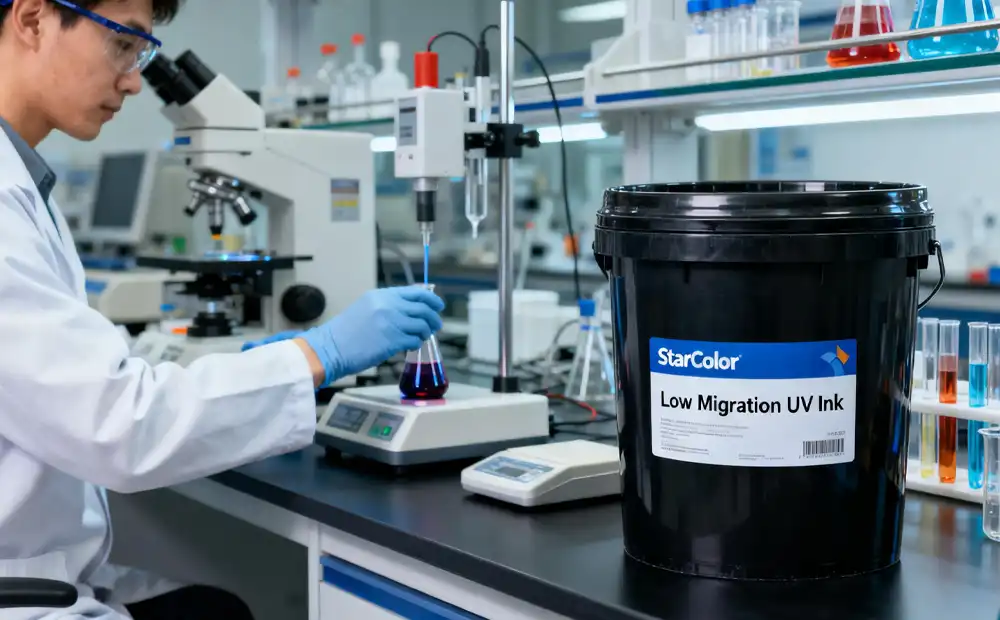
Conclusion
Reducing photoinitiator residue in low migration UV inks requires a systematic approach involving initiator selection, resin compatibility, and additive control. By using high-reactivity initiators, synergistic formulations, and targeted additives, manufacturers can achieve efficient curing with residue levels safely below regulatory limits, meeting the stringent demands of food and pharmaceutical packaging.
Only by controlling formulation design from the source can manufacturers produce UV inks that are truly high-efficiency, low-migration, and safe—ensuring compliance and protecting end-user health.
 RU
RU EN
EN CN
CN








